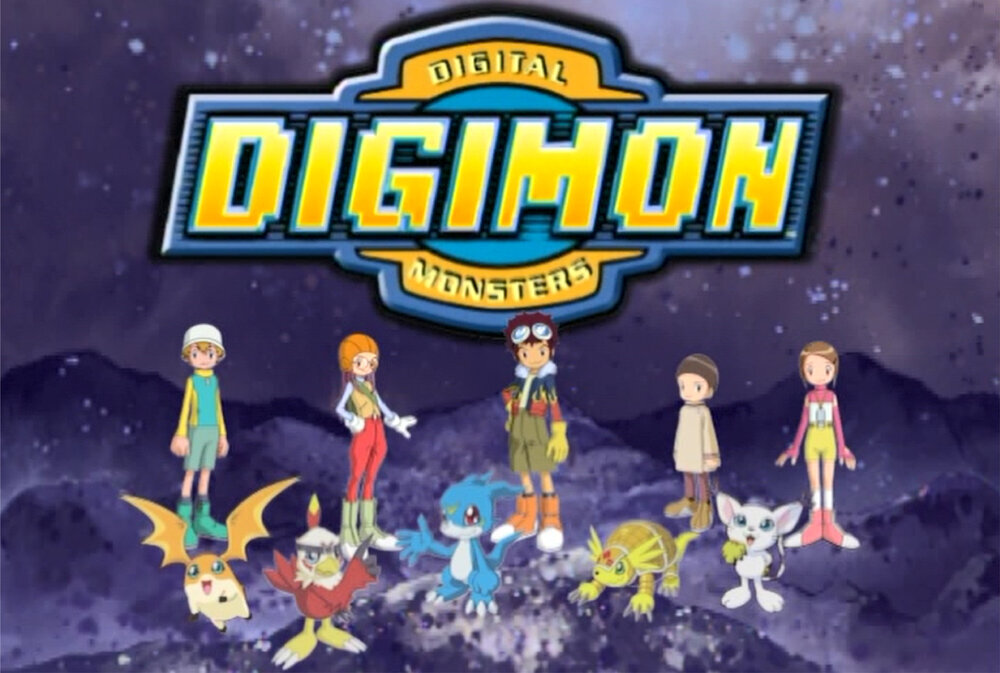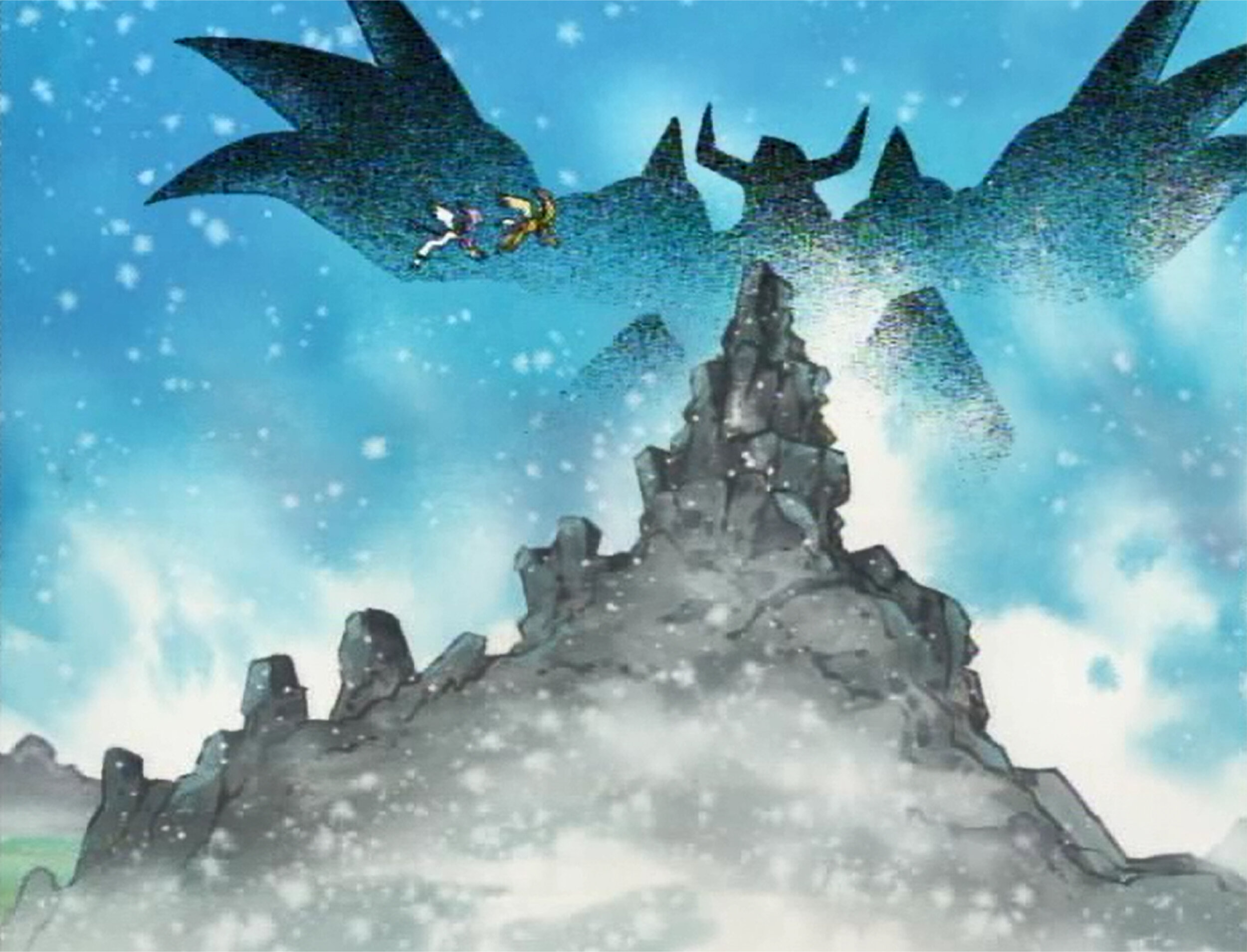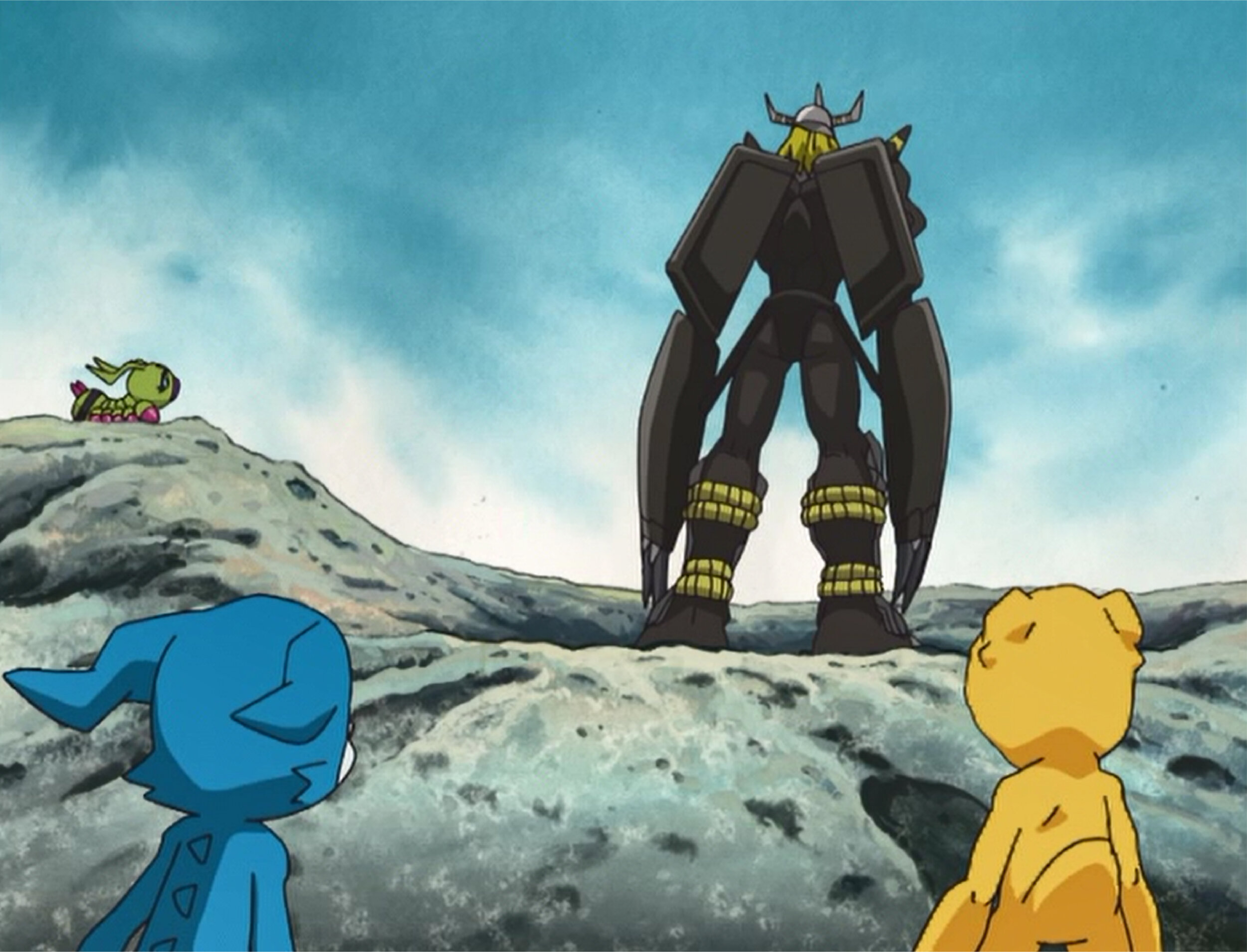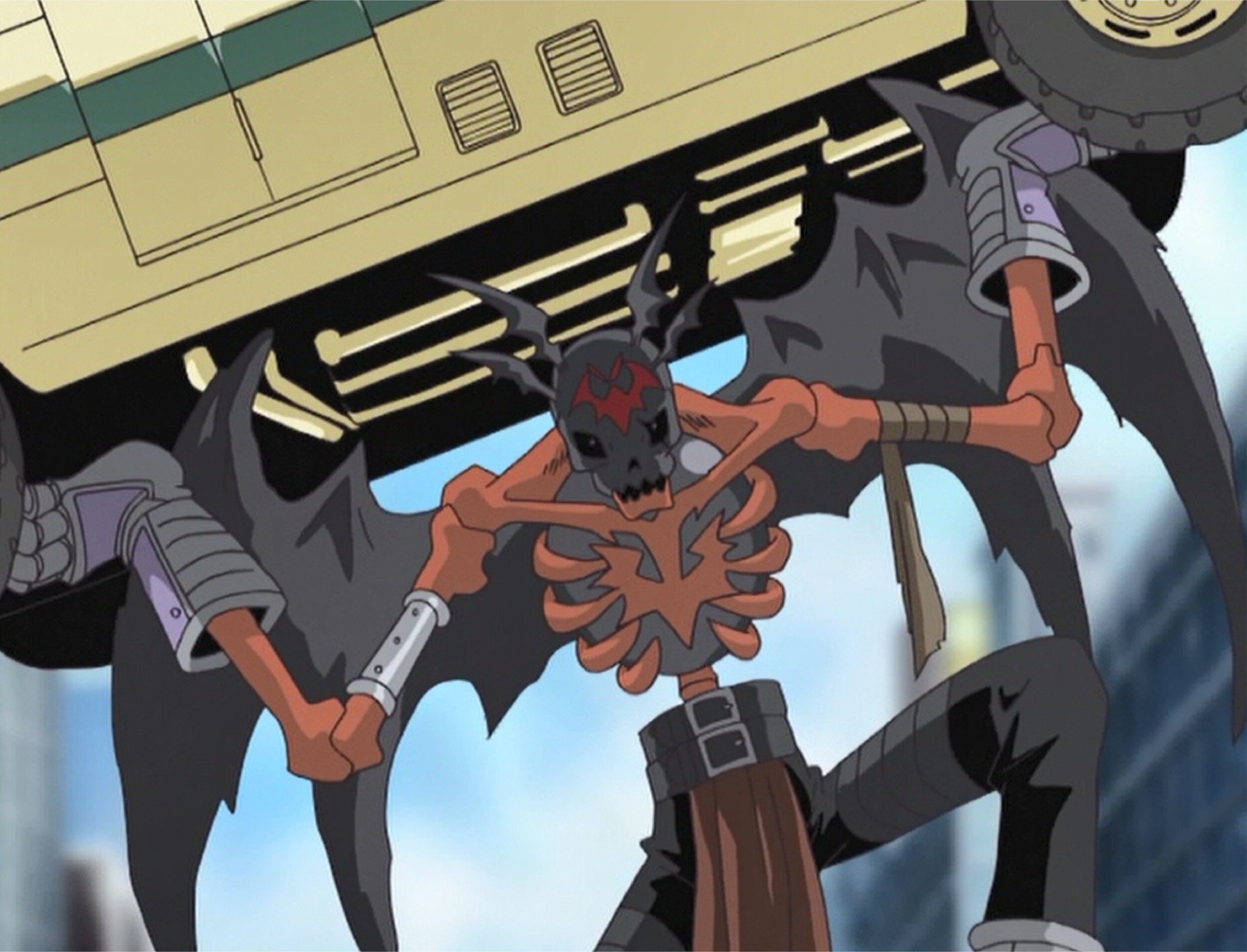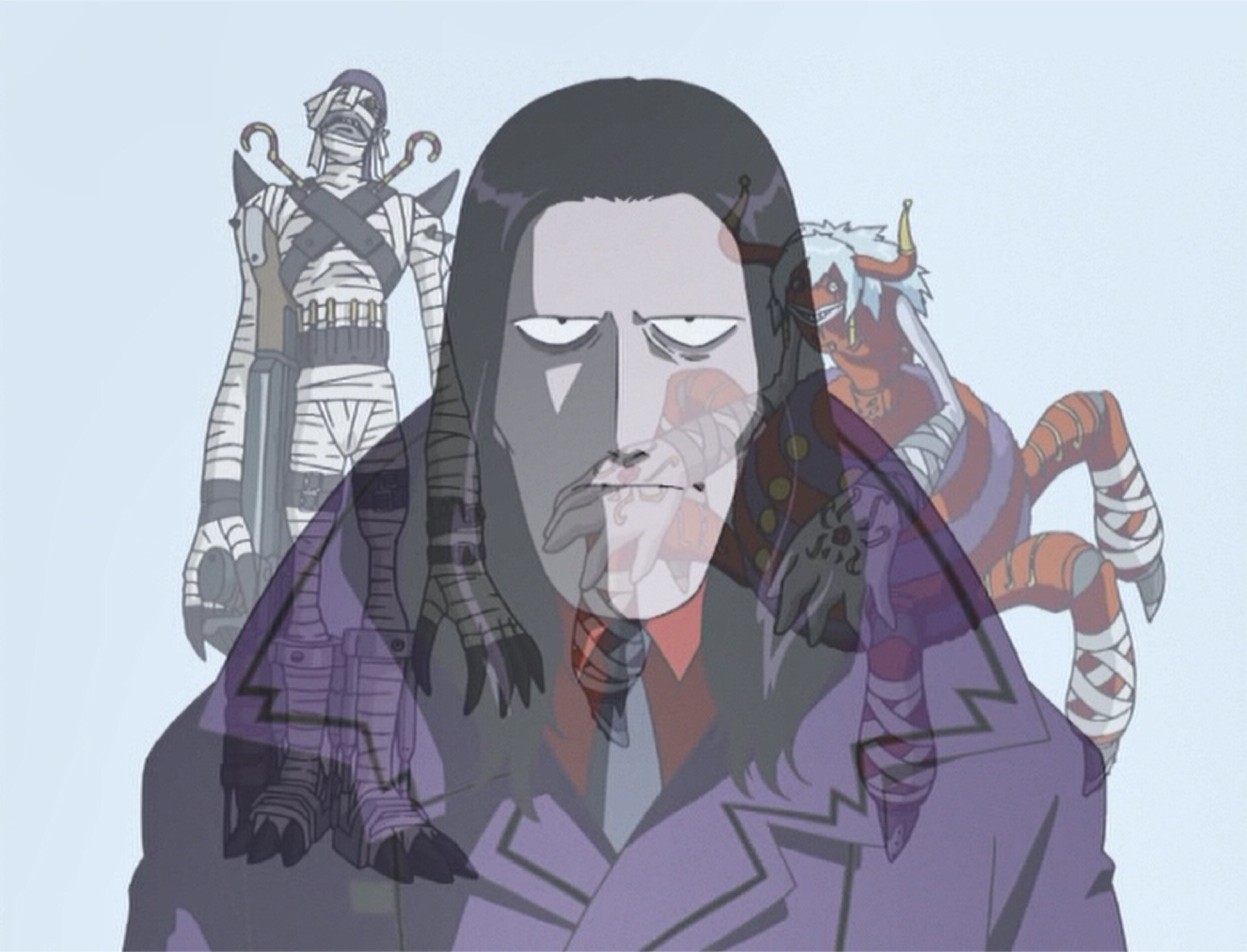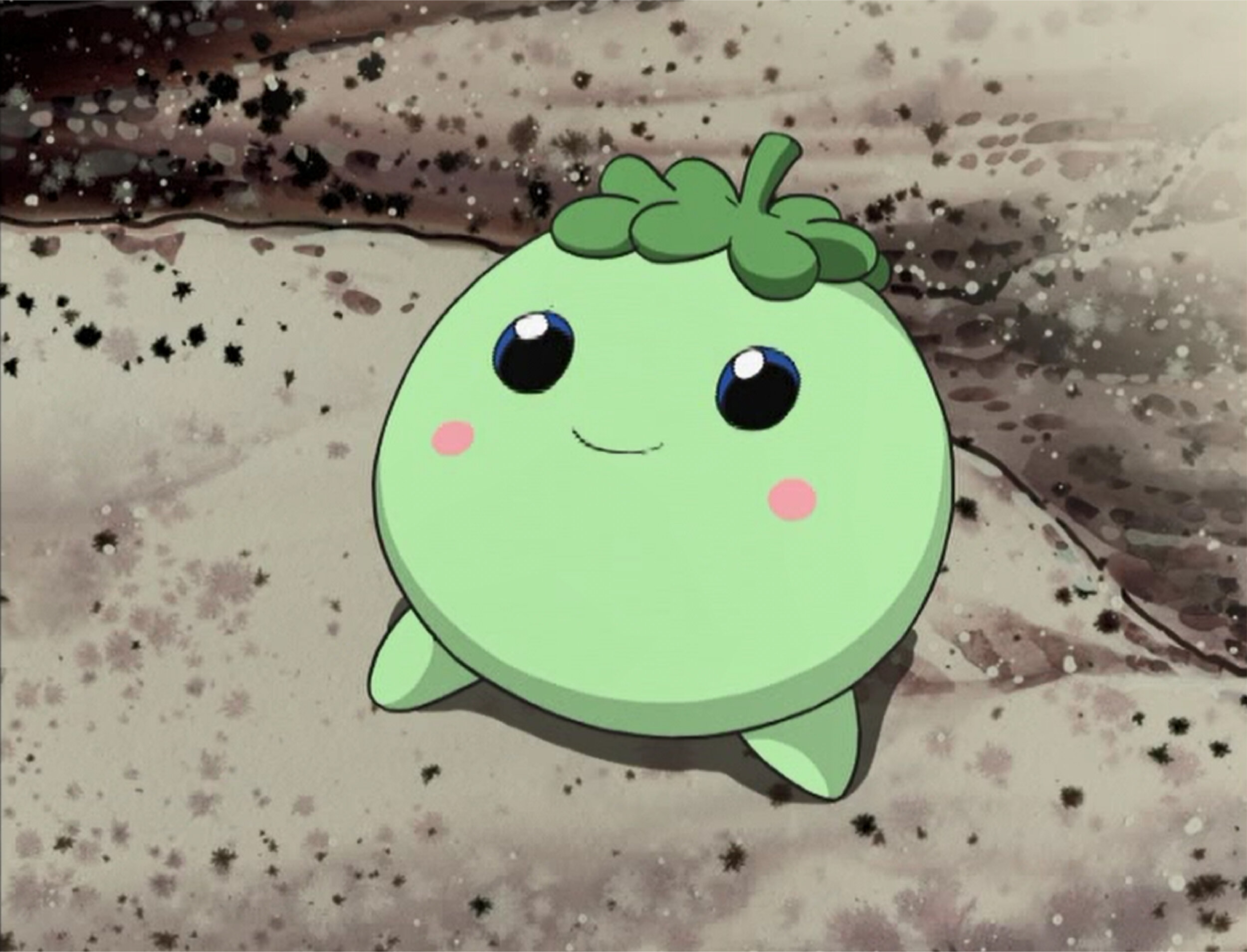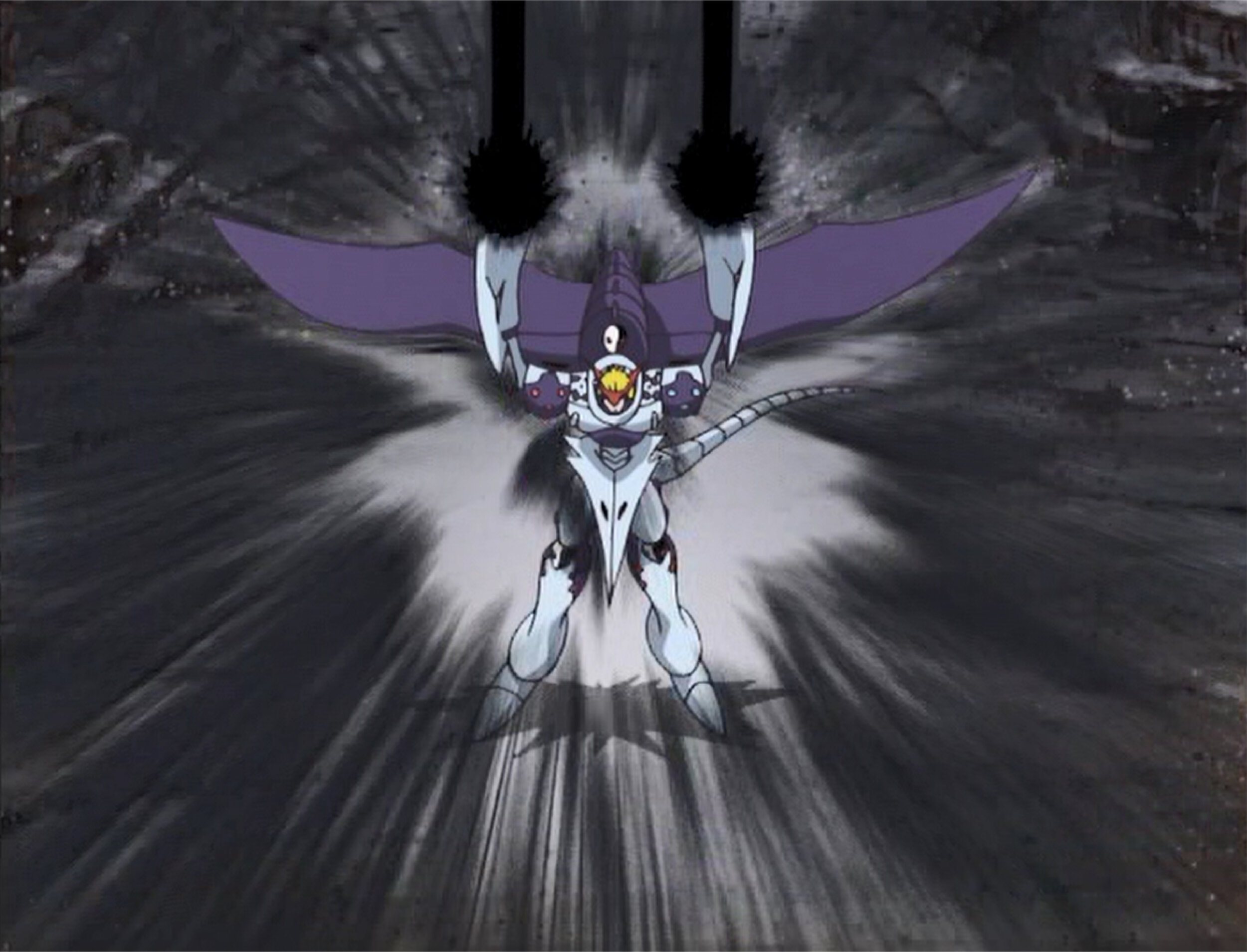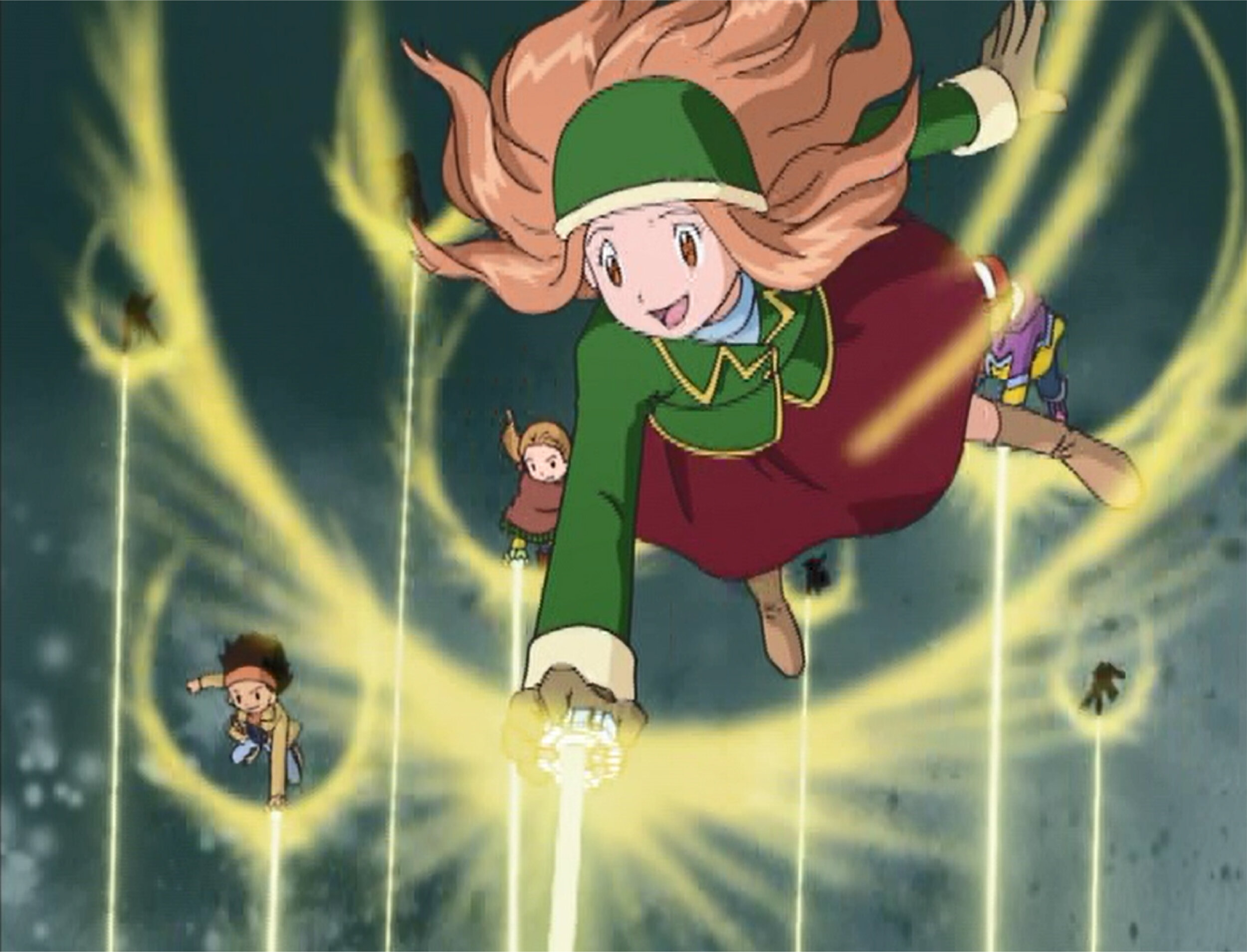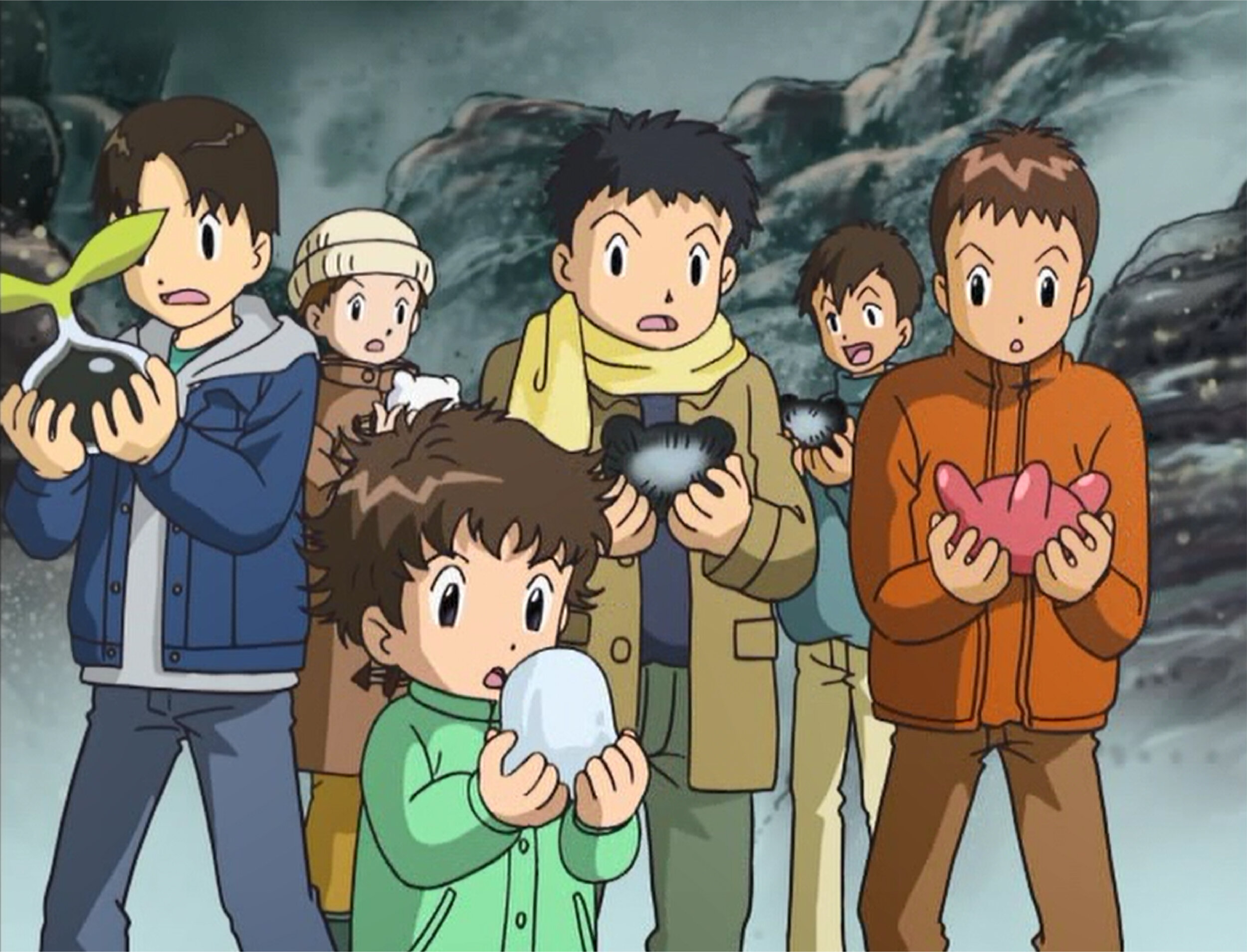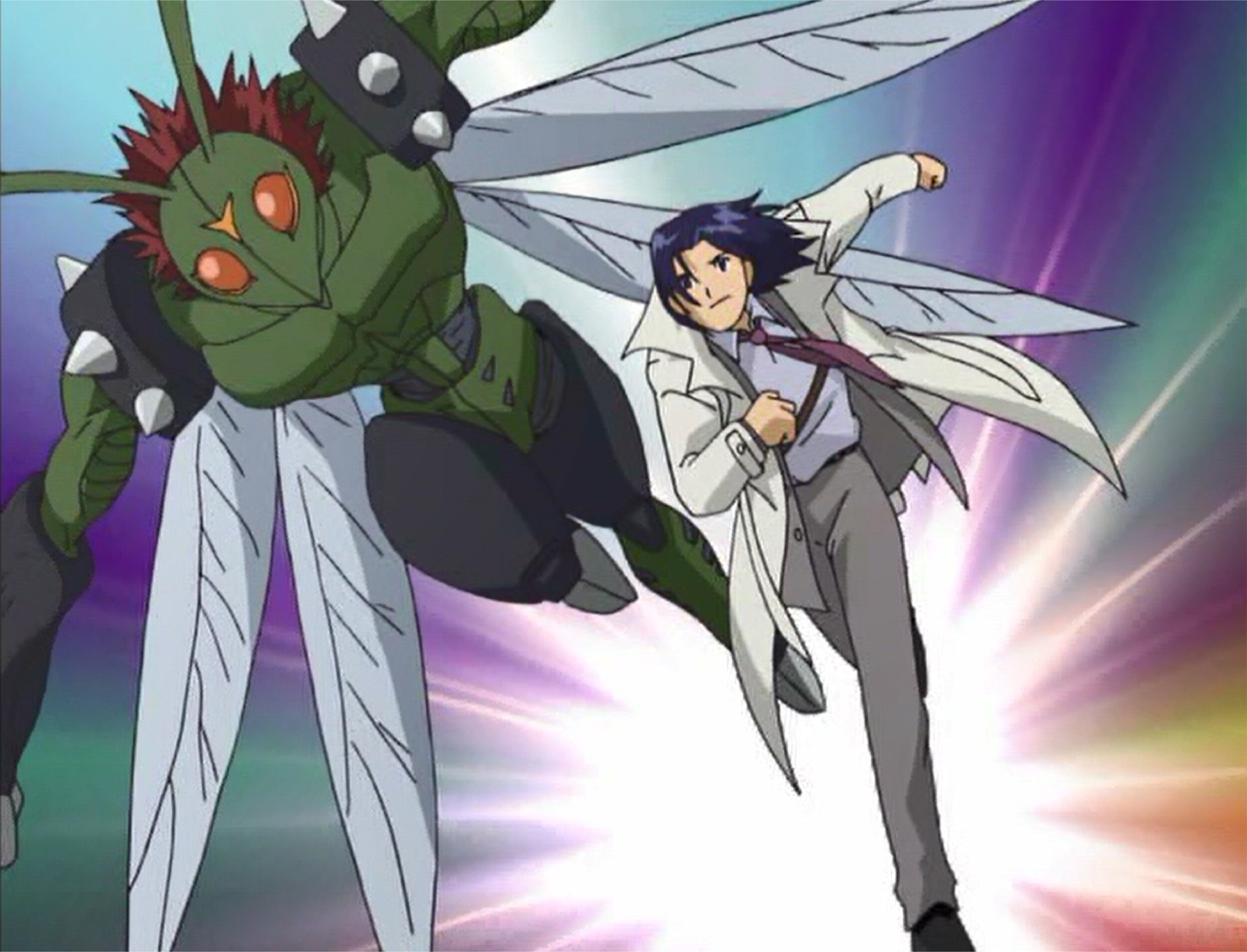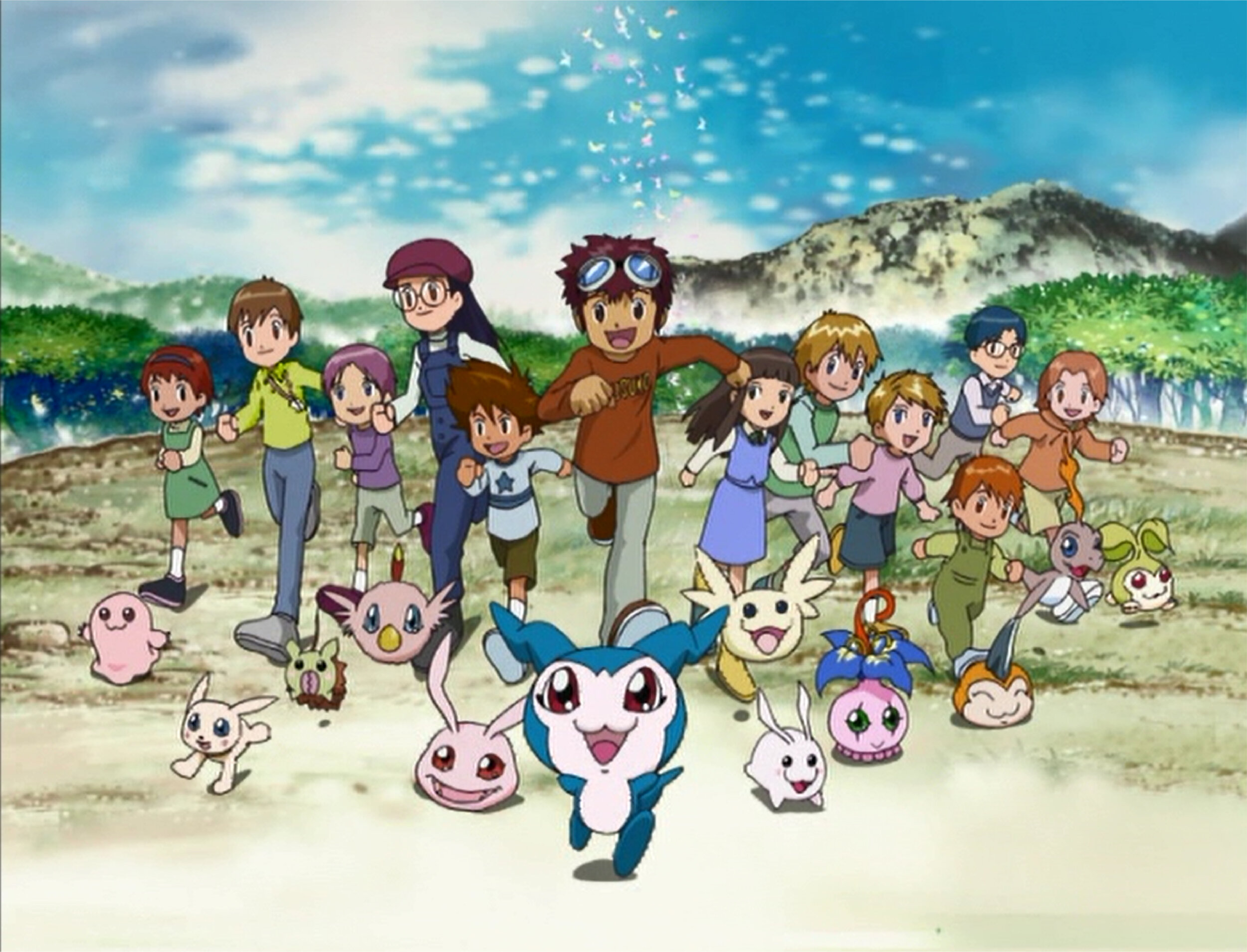Digimon Adventure 02 Revisited: Oikawa Arc - Part Two
Welcome back for the final deep dive into Digimon Adventure 02 (2000). This will be second half of topics on the Oikawa Arc, to find the first half, you can head over here.
The first part was primarily focused on the digidestined themselves and the expanding lore of the series, but this one is going to be more about the villains and themes that this arc gets into.
The Oikawa Arc runs from episodes 22-50.
(Note: all references to specific names will refer to the dub of the series. Dubs are my personal preference, and this is the version that I grew up with.)
The Tragedy of BlackWarGreymon
In the final episodes of Digimon Adventure (1999), after the Dark Masters have been defeated, it is revealed that there is another Digimon behind everything the digidestined had gone through, Apocalymon. In episode 53 of that series (“Now Apocalymon”), he explains to the digidestined that he has been created from the data of all the Digimon who have failed to digivolve. He is a being of pure misery, who can only feel negative emotions. In a series that builds to a conflict of positive emotions versus negative ones, he is the personification of all that is negative.
As Apocalymon explains what he is, he asks the digidestined if he is worth existing even though he was formed by pain and misery. Rather than say anything, the digidestined mostly turn away, either because the issue is too complicated, or possibly that they are ashamed of their answer.
So, why is all this being brought up now? Because BlackWarGreymon exists to ask the same question.
BlackWarGreymon is created by Arukenimon in episode 30, “Ultimate Anti-Hero”, when she combines one hundred control spires to form into a single Digimon. In episode 48, “Oikawa’s Shame”, Oikawa explains that the control spires originated from the Dark Ocean, which we also know is a world built on dark thoughts and feelings. Because of this, Apocalymon and BlackWarGreymon are arguably made of the same negative emotional energy, even if the details of their origins are different.
Two episodes after BlackWarGreymon’s first appearance he is questioning his own existence, if he can be considered “real” and if he even has a heart (episode 32, “If I Only Had a Heart”). Arukenimon tells him he was created for destruction and that any feelings he thinks he has are just in his head.
Contrasting this is a conversation he has with Agumon in the same episode. Agumon reaches out to him, because they are similar Digimon, Agumon does digivolve into WarGreymon after all. Agumon believes anyone can have a friend and having a friend must prove you have a heart, because you can’t care about someone as a friend if you don’t have a heart.
Agumon’s attempt to make friends almost works, with the only thing changing BlackWarGreymon’s mind is the feeling that comes over him when one of the Destiny Stone is being attacked. He gives into this feeling and flies off, destroying it, and making it his mission to destroy the other six. As close as he was to having a friend, he feels he needs something more logical, he needs to know a real purpose for why he came into existence, and he believes destroying the Destiny Stones could be that purpose.
In episode 37, “Kyoto Dragon”, BlackWarGreymon is about to destroy the final Destiny Stone, until the digidestined stop him by summoning Azulongmon with their digivices. Azulongmon is primarily here to deliver all the exposition the digidestined need in that moment, but he also has answers for BlackWarGreymon.
Azulongmon tells BlackWarGreymon that the circumstances of his birth don’t matter, and only he can decide what his purpose or destiny truly is. In essence, Azulongmon confirms that BlackWarGreymon is a “real” Digimon, regardless of being made of control spires, and that he has as much freewill to decide what he wants to do with that existence as anyone else. Just because he was made from negative forces, doesn’t mean that is all he is, or all he could be.
After this, BlackWarGreymon disappears for a while to be alone, and doesn’t return until episode 46, “Duel of the WarGreymon”. In this episode BlackWarGreymon comes to the human world to confront Oikawa. He believes that because Oikawa created Arukenimon, who in turn created him, it follows that in a sense Oikawa is his true creator. He tries to destroy Oikawa, believing him evil, but the Digidestined arrive to stop BlackWarGreymon from killing a human. A battle ensues, first between BlackWarGreymon and WarGreymon, and then finally with Imperialdramon (Fighter Mode) coming to help out.
This is the only time BlackWarGreymon loses a fight, but he isn’t destroyed. Instead, Wormmon, Veemon, and Agumon finally convince BlackWarGreymon that he can have friends. This moment is the second major turning point for him, and he seems to really take it to heart.
BlackWarGreymon appears again in the very next episode (episode 47, “BlackWarGreymon’s Destiny”). He senses the dark power coming off Oikawa and ends up taking a hit to save Cody’s grandfather. A single episode after he has found friendship, he shows compassion for human life. This isn’t the first time, of course, he saved a flower from being trampled in episode 32, “If I Only Had a Heart”, and feels conflicted over the thought of hurting Cody in episode 35, “Cody Takes a Stand”, but this is the first time he fully does something good without turning away from it or fighting against these instincts.
Already hurt from Oikawa’s attack, when BlackWarGreymon sees that Myotismon is inside of Oikawa, he makes the ultimate sacrifice and gives up his life to seal the gateway to return to the Digital World to stop Myotismon’s plans.
After the story of BlackWarGreymon, it’s hard not to go back and think of that question from Apocalymon again, almost a plead from this Digimon wishing to know if he deserves life or not. These are not exactly the same story. There is no situation where in those final two episodes the original digidestined could have befriended Apocalymon and turned him good, but it does beg the question of what could have happened if the digidestined had come to find him earlier, or if others had been kinder to him earlier. Could things have been different then?
Well, unfortunately, BlackWarGreymon’s story may give us a pretty definite answer. In the end, BlackWarGreymon couldn’t live. He never got the chance to truly be happy. Even after finding friends, he was a being who only knew battle. When he felt the strong force coming off Oikawa, he rushed there to fight. And in the end, the happiest ending he could be given was to die doing something good. He had reached a point where the only redemption he could get was in death.
Did Apocalymon deserve to live with everyone else? Did BlackWarGreymon deserve to live with everyone else? While Digimon Adventure 02 does seem to believe it is possible a good heart to be born from even the darkest of places, in the end, it still doesn’t go so far as to allow that character to stick around. This is an idea we’re going to see repeated again a with another villain later on.
Killing in Digimon – Giving Purpose to the Daemon Corps
In the first half of Digimon Adventure 02 Chimeramon is created by the Digimon Emperor. He is treated as pure evil, and not a “real” Digimon, at least as far as the digidestined were concerned. He never spoke, and there was no comment made when Magnamon killed him.
Soon after this, Arukenimon arrives on the scene and starts creating Digimon out of the control spires. While Ken’s work to destroy these Digimon is first used as evidence of his continued evil, as soon as the others learn that they are made from control spires they once again decide these Digimon aren’t real. So, when the digidestined kill them, it is no different than destroying the control spires themselves.
Even with this in place, the conversation begins to change when BlackWarGreymon is involved. While he is another Digimon created from control spires, it is decided that he has a heart, and therefore he is real, and the new digidestined move onto the side of it being wrong to kill him, regardless of how evil he appears to be.
We really see this debate playout in episode 34, “Destiny in Doubt”, where Gabumon confirms for Cody and TK that BlackWarGreymon has a heart. This idea changes everything for Cody, while TK is the only one who refuses to budge from his position of killing the darkness.
For the majority of this series, this is how the argument is framed. Killing Digimon is just wrong, and so instead the question becomes one more about whether or not something can be considered “real”. If the Digimon isn’t real, if it is just an object made to look like a Digimon but can’t actually think or feel for itself, it can’t be bad to kill it, can it?
BlackWarGreymon’s entire arc already complicates this. He is made from the control spires, but is proven to be a Digimon like any other. Because of this, the show implicitly calls into question the flippant attitude with which the digidestined have considered other control spire Digimon not real and therefore not worthy of life. There is a possible reading of BlackWarGreymon’s arc that can definitely put the past in a new context, but instead the series begins taking on the argument from a different angle:
Can killing be okay (or at least, necessary)?
The Daemon Corps exists for only three episodes toward the very end of the series. They show up in episode 43, “Invasion of the Daemon Corps”, in hopes of collecting the dark spore from Ken, while Oikawa attempts to do the same. The four members of this group are LadyDevimon, MarineDevimon, SkullSatamon, and Daemon. They all have one thing in common: they all look like devils or demons. In fact, they are all probably within the same evolutionary line as Devimon.
Even just by their appearance, they are designed to be a group that appear unquestionable bad. This stands in stark contrast to the other villains of the series (until MaloMyotismon reveals himself). The Digimon Emperor was a human, Arukenimon and Mummymon both have human forms, Oikawa is a human, and BlackWarGreymon shares his look with one of the main Digimon from the original series (just, with a darker colour scheme). The Daemon Corps take us back to the villains of the original series, most of whom were meant to look evil on first glance.
In the same episode as the Daemon Corps first arrive, Tai and Kari have a very serious talk. Tai tells his sister that the new digidestined need to be prepared to make the same tough decisions the older kids made, where they had to actually kill real Digimon, otherwise, innocent people will get hurt.
By the end of the episode, SkullSatamon picks up a bus full of children and all of their lives are on the line. Imperialdramon is given no choice but to kill SkullSatamon to save the children, and while Ken and Davis seem relatively fine with this knowledge, both Yolei and Cody are traumatized by what they witness.
The following episode, “Dark Sun, Dark Spore”, is about pushing both Yolei and Cody into positions where it is felt like there is no choice but to have their Digimon kill. For Yolei, it comes down her confronting LadyDevimon, leaving her open to an attack that could get her killed. Silphymon kills LadyDevimon to save Yolei, and it sends Yolei into a spiral of feeling responsible for taking a life. She is only helped when Kari brings up that if Yolei didn’t do what she did, a few boys would have been killed.
Next up is Cody at a hospital with TK and Joe’s brother, where they are trying to help a child get to safety while MarineDevimon fights Shakkoumon outside. When one of MarineDevimon’s tentacles break through the hospital wall, Shakkoumon kills him before anyone can get hurt. Cody finds himself conflicted between knowing that it meant saving lives, but struggling to accept that killing can ever be okay.
As an aside, it is interesting that given the way Daemon’s lieutenants are used as an argument for the existence of justifiable reasons to kill, that Daemon himself is never killed. Though, he does have an important role in character development none the less.
Daemon’s quick story ends in episode 45, “The Dark Gate”, and acts as a culminative moment for Ken’s connection to the Dark Ocean. Ken is forced to look inside of himself and painfully return to all of his worst feelings in order to open the dark gate and get Daemon away from them. It is in this moment that all the other digidestined join in to help him. It is a sign that he is no longer alone, that he has friends to help him face the darkest parts of himself, better yet, that they have forgiven him for his time as the Digimon Emperor.
In the end, the Daemon Corps are incredibly short lived, to the point it wouldn’t be that shocking if some fans have forgotten they even existed. But while they weren’t around for long, they do seem to have an important role to play on one of the major debates that this series seemed interested in taking on. Is killing Digimon okay?
Aside from one time episode 13, “His Masters Voice” – which it is important to note occurs without the new digidestined being involved – there is not a single bad Digimon killed in Digimon Adventure 02 until the Daemon Corps, except for ones they argue aren’t real. The Daemon Corps prepare the new digidestined for the actions they will need to take in the final episodes, when they go up against the biggest bad of the show. Because of this, the Daemon Corps play an important role for the series, even if they never got the time to get fleshed out.
The Anti-Digidestined – Oikawa
Digimon Adventure 02 begins on images of the Digital World in trouble, of the Digimon trying to run in fear, with the source of this fear revealed to be a digidestined turned evil. Oikawa is another side of the same coin. He is another human, but Oikawa never got to be a digidestined, he never got to go to the Digital World and have a big adventure with his friends.
Oikawa is, in a lot of ways, the anti-digidestined. He knew about the Digital World, he and his best friend, Hikori (Cody’s dad), could see it when they played video games, but they couldn’t go. This is all talked about in episode 47, “BlackWarGreymon’s Destiny”, when Cody’s grandfather confronts Oikawa. It was Cody’s grandfather that made them stop playing the game when they were kids, and in doing so ended the connection they had to the Digimon.
Oikawa is motivated entirely by the need to experience something he was refused in his past. His obsession didn’t stop as he grew into an adult, it only solidified. We learn in his first appearance, episode 38, “A Very Digi-Christmas”, that he investigated both the original Highton View Terrance incident (where Greymon fought Parrotmon), and the Odaiba incident (with Myotismon). He is seeking out any evidence he can of Digimon as he tries to make his was to the Digital World.
But just wanting to go to the Digital World probably isn’t enough to get the title of anti-digidestined, so let’s get into his Digimon. It is revealed in episode 46, “Duel of the WarGreymon”, that Oikawa actually created Arukenimon and Mummymon himself, and did it by digitizing his own DNA. This connects directly to how the original digidestined had their Digimon created. It is explained in Digimon Adventure (1999)’s episode 45, “The Ultimate Clash”, their Digimon came from scanning the digidestined when they were children. The Digimon were also infused with the power to digivolve using the child’s most prominent positive emotion, and thus the crests were born.
Whether it is to be taken literally, or if it is just a fear of Oikawa’s, Arukenimon and Mummymon are heard in a flashback claiming that they are the ugliness inside of Oikawa. It’s like what we usually see as Digimon partners are the results of the positive energy from children, and Oikawa’s henchmen Digimon are what happens with the negative energy from an adult.
Arukenimon and Mummymon are also interesting for another couple reasons. For one, they have humans forms so that they can fit in either world. It was true in the original series that about half of the villains had relatively human looks to them (especially Myotismon), but these two seemed to pass as totally human to everyone until they transformed. In this series where two of the major villains of the show are humans, this almost feels like it is asking the question of how different humans and Digimon really are. Now, this might be stretching it, so take it with a grain of salt, but where BlackWarGreymon is an argument of what does a life really mean, maybe these two were low key asking the question of what really is the difference between a human and a Digimon?
But here is the other reason Arukenimon and Mummymon are interesting: because not only do they have each other, but Mummymon loves Arukenimon. When Oikawa created his own Digimon, he didn’t just make one to be his friend in the way most Digimon partners are, he created two so they have each other. He is a man who we see is so lonely after Hiroki died, it says something about him that he created two Digimon that he presumably made to be so close.
Then there is what really turned Oikawa into the character he is within the time where the series is taking place. Oikawa hit his bleakest point back during the events of the Myotismon arc back in Digimon Adventure (1999). He saw the Digital World in the sky and raised a picture of his dead best friend up to show him the Digital World they never got to explore together. He sees the digidestined floating up into the sky as they make their way to take on the Dark Masters, and all Oikawa can do is cry out for them to take him with them. And then a voice appears.
The voice says that it can sooth Oikawa’s heart with darkness, and take him to the Digital World. Not only is this all Oikawa’s ever wanted, but with his only friend dead, he has nothing else, so, he agrees emphatically. He would do anything to get to the Digital World.
This voice is revealed to be Myotismon, seeking out a body to live in until he can find the power to rebuild his own. From everything we see, it seems that Myotismon was mostly silent inside of Oikawa. He put thoughts in Oikawa’s head without making his presence known (this is going off how surprised Oikawa was by the reveal in episode 48, “Oikawa’s Shame”). Presumably, everything to do with the Dark Ocean, the control spires, using Ken, maybe even the creation of Arukenimon and Mummy (the timeline isn’t clear as to when they came to be), were all thought up by Myotismon, but Oikawa believed they were ideas of his own.
Oikawa is shown to be single minded, but not necessarily evil himself. When he has the dark spores in the children, he is using them for a means to his own end – to get to the Digital World – but it does seem like he thinks he is doing something good for them. He is making them smarter, and better at sports, and even taking them to the Digital World with him! The only catch is he has to remove the dark spore in time or else the children will turn into trees. But as long as he does that, he’s only doing them a favour with all of this, right? He even starts a chant with all the children about how they are opening the digital gate. There is no argument here to say he is just or good in this plan, but it does seem that he’s at least diluted himself enough to believe what he’s doing isn’t all bad.
Oikawa never makes it to the Digital World. When Myotismon leaves him, his body is near death. He leaves the human world, but only to get to the wishing world, getting right to the point where it breaks into the Digital World but unable to make it those final few steps.
Cody is the one who drags Oikawa as close to the Digital World as he can manage, and it is a great moment for Cody, because it shows the level of forgiveness he has gained since the days when Ken first stepped down from being the Digimon Emperor.
Oikawa sees Datirimon in the Digital World, his own Digimon partner. The way he talks it sounds as though this must have been the partner he saw back in the days where he and Hiroki would see Digimon in their video games. And in this moment, seeing what the Digital World has become because of his actions helping Myotismon, Oikawa sacrifices himself. He uses the power of the wishing world to turn himself into energy, in the shape of butterflies, and uses that energy to fix the Digital World. In the end, just like BlackWarGreymon, his prior actions mean the show only sees sacrifice as the way to redeem him.
What made Oikawa a villain was how much he loved Digimon and just wanted to experience what being with them could be like, and how with no one else in his life, the loneliness allowed that need to consume him.
In Oikawa’s final moments, he says to Cody, “Hold onto your optimism, your dreams, and especially your friends, Cody. Perhaps if I had been more like you, I could have had adventures too.” It is in this line that he reveals what it is to be a digidestined, to have the positive emotions to fight back against the darkness, and look to friends to help along the way.
MaloMyotismon – Darkness Embodied
All the way back in episode 17, “Ghost of a Chance”, Wizardmon returns as a ghost to give the digidestined a message. Their enemy is not just the Digimon Emperor, but a greater darkness, that they will need Ken’s help to defeat. This is pretty much definitely talking about Myotismon, who we eventually learn has been hiding within Oikawa’s body until he can regain power of his own (revealed in episode 48, “Oikawa’s Shame”). The fact alone that it is Wizardmon delivering this message is foreshadowing who this greater darkness could be.
It is interesting that in a series that is so built around human villains – from the Digimon Emperor to Oikawa, and even Arukenimon and Mummymon both taking human forms – that the final villain of the series is the most human-looking villain from the original Digimon Adventure (1999). While Piedmon and Devimon were relatively human, they both had real horror movie edge to them, where Myotismon was treated like Dracula, aiming to be an exaggerated though still handsome man, human enough to be going around seducing women at night to suck their blood.
When he returns at full strength in this series, he takes on the new form of MaloMyotismon, and in doing so gains a seemingly new ability. MaloMyotismon is able to read the minds of those around him, to find the darkest parts of them. He uses this ability to torment Arukenimon. He looks into her mind for what she is most afraid will happen to her, which is apparently being beaten up and stabbed by him, and he does whatever she thinks of a few times before eventually killing her.
This power doesn’t only manifest negatively, but has a vaguely positive use as well. MaloMyotismon uses this ability to look into the digidestined and create illusions of seemingly positive things. He uses his ability to find what they are most insecure or unhappy with, and twists those to lull the digidestined into a false happiness.
This power gets into what MaloMyotismon really represents, and that is a physical embodiment of the powers of darkness. The way he can look the into minds of these characters to find their most negative feelings is a demonstration of how this darkness exists in everyone (except apparently Davis). This becomes even more clear by the way the digidestined act when they are just in his presence. It is the way Ken and Kari behave when things have to do with the Dark Ocean, but pushed even further. The darkness is paralyzing them, the fear too much to do anything at all.
It is the fact that MaloMyotismon is this embodiment of darkness that makes it fit so well that he is a returning character rather than a brand-new villain.
Jumping all the way back to episode 37, “Kyoto Dragon”, Ken makes the claim that they will have to destroy everything that has to do with the power of darkness or else it will continue to grow and more creatures like BlackWarGreymon will be born. Even with the past few episodes being so focused on TK wanting to destroy the powers of darkness, he is the one who speaks up against this idea. He doesn’t think it is possible or even necessary, because anytime there is light there will be darkness, and what is important is to never lose the light.
All of this is saying that darkness doesn’t exist in a way where it can be destroyed, it is there to be fought against. And just like darkness itself, Myotismon wasn’t destroyed, and so the light of the digidestined came together to fight him again.
Along a similar line, in the end, MaloMyotismon wasn’t defeated because of pure force. The Digimon weren’t strong enough to hurt him at all while he was covering the Digital World and human world in darkness. It took the light of the humans, and all of them coming together, believing in themselves and their dreams, that was finally able to do it. Before the dark spore children believed in themselves, he was feeding off their insecurities to gain more power. His strength was completely dependent on negative feelings of those around him.
And this is something that comes up in the very end of the series as well, with TK narrating over the epilogue. He says the darkness has not been conquered, it will continue to fight against the light forever, but as long as people remember to follow their dreams, evil will be kept at bay.
The use of Myotismon and this concept of darkness never being fully destroyed, is probably one of the most interesting things Digimon Adventure 02 does with its connection to the original series. In the end, even though this is the final villain of the series, they explicitly say that there is no one final bad guy that if you defeat them everything is better. This is a constant fight that will never end, because good can’t exist without evil, and vice versa.
Power Vs Friendship
One of the core themes of Digimon Adventure 02 is about the ways in which the concept of power is shown as something almost antithetical to friendship for those who are seen as villains.
While not villains themselves, let’s start with how the dark spores affect the children implanted with them. All the children chosen by Oikawa, were all ones who believed they weren’t good enough. This might mean different things for each of them, but we do know for sure they all wanted to be “better” (talked about in episode 44, “Dark Sun, Dark Spore”), and they had given up on their dreams for fear they couldn’t accomplish them (talked about episode 50, “A Million Points of Light”). And we know the same goes for Ken, because all his flashbacks to the time before he went to the Digital World showed us a child who struggled with feeling like he was unloved and couldn’t live up to his older brother (in episode 23, “Genesis of Evil”).
When Oikawa looks to copy the dark spore that is inside of Ken, Ken tries to talk the children out of this, but they don’t believe him. The children have decided that the idea of becoming physically and mentally stronger (said as “smarter and better at sports”, but same basic idea) is worth having the darkness inside of them. They are taking Oikawa’s word, and that means choosing a life where they will be powerful, but alone and looking down on everyone else, just like the way Ken did as the Digimon Emperor.
This is a repeated concept throughout the series with most of the villainous characters. The Digimon Emperor refused friendship because he needed to be the most powerful, BlackWarGreymon refused friendship because he believed he was made only to be powerful and couldn’t have a heart, and Oikawa sought power because he had no friendship after Hiroki died.
Arukenimon and Mummymon are an interesting in terms of this situation. While the two of them are Oikawa’s Digimon, Oikawa doesn’t treat them like friends (like the digidestined do), he treats them like minions (like the Digimon Emperor did). They seem to listen because they work for him, but there is never a sign that they really care for him. But that isn’t totally the case for how they feel about each other.
Mummymon is in love with Arukenimon, which is different from friendship, sure, but it is still a connection to another person. Mummymon is the only villain throughout this entire series who shows any kind of emotional connection to anyone while simultaneously being one of the villains. With every other villain, when they choose friendship, they give up their power. For Ken this meant losing memories and his soccer skills, and for BlackWarGreymon and Oikawa it meant giving up their lives as a form of redemption.
In this way, Mummymon is actually much closer to Wormmon than any of the other villains, a character who does bad things because his “master” tells him too but doesn’t actually seek the same ends. And Arukenimon is kind of a midpoint. She acts similar to Wormmon with Oikawa, but acts similar to the Digimon Emperor with Mummymon. Full disclosure, I don’t know what any of this really means, but I do think it is interesting enough to have it worth mentioning because they do really stand out.
There isn’t really anything to talk about in terms of Daemon or his group in this light, because we never really see how their relationship functions.
And then there is MaloMyotismon. There is never a question of friendship with him, only the concept of using others to gain power for himself. But where he does help build this theme is both how he tries to defeat the digidestined, and how he is ultimately defeated.
MaloMyotismon’s first move is to separate the digidestined. While the villains of this show fight for power over all else, the digidestined get their power from their friendship. This is most obvious by the use of DNA digivolving, described as being only possible because of how close they all became (by Azulongmon in episode 37, “Kyoto Dragon”). MaloMyotismon knows this, and tries to take away this power by putting each of the digidestined into their own illusions, attempting to make them so content that they won’t think to come together.
Of course, this doesn’t work, because Davis is so happy because of all of those around him. He says he has nothing to be insecure or unhappy about because of his family, friends, and the Digimon. He is able to get past MaloMyotismon’s scheme specifically because of the relationships he has built.
MaloMyotismon is essentially beaten twice, first in the wishing world and then in the Digital World. Both come to the same end but by different means. In the wishing world, the digidestined are able to come together with every form that their six Digimon have ever been able to achieve, a show of force by numbers. In the Digital World, it is the digidestined’s turn to show the numbers, because while all the partner Digimon are there, it is the light of every digidestined from around the world that is able to weaken MaloMyotismon to the point of being defeated. In both cases, darkness is defeated by groups of people and Digimon coming together as one.
In the end, this series is largely about the ways in which those who seek power by looking to be above everyone else can never reach the same levels of those who can work together. It is about coming together against the darkness, it is about being there for each other.
Even when the battle is a personal one, like Ken trying to open the dark gate in episode 45, “The Dark Gate”, it is having friends there with him that makes him able to handle it. Ken is the greatest sign of this theme, from the ways he lost control when he sought only power, to how he could stand up against even the most powerful when he opened up to having friends.
Digimon as Dreams
Within the final episode of the series, “A Million Points of Light”, Digimon Adventure 02 introduces us to a new theme of what the Digimon themselves can stand for, and that is that they are the embodiment of the digidestined’s dreams.
This comes out of the fact that all of the children who were implanted with dark spores are shown in this episode to have given up on their personal dreams; they’ve decided or were told they just weren’t good enough to be who or what they wanted to be. At first this acts as a source of negativity that is powering MaloMyotismon, but then things shift as the digidestined, and especially Davis, try to convince them otherwise.
Davis talks about how regardless of if these children are digidestined, they can still have a good life, they still have hopes and dreams. To help them realize this, he talks about his own dream of opening up a noodle cart. This gets the ball rolling and all of the dark spore children start talking about their own dreams that they had given up on, and right after that, their Digimon are born.
The way these new Digimon show up imply something about what they represent, and that seems to be either the potential of the child, or possibly even just their dreams. This can fit really well with how Digimon work, especially with their digivolution lines being as complicated as they are.
This isn’t something in the anime very much, because only a couple times do any of the Digimon get a chance to show multiple forms they can take (outside of the armor digivolving), but every Digimon has a massive branching tree of what they can digivolve into. Take a group of the same baby level Digimon, and they can become one of a few different in-trainings, but then each of those have even more rookies they can become, and then even more champions, etc. Even if at every level the Digimon has three options of what to digivolve into (and this is being very conservative with some of them), that would mean the same baby Digimon can digivolve into 243 different mega level Digimon.
If we look at how Digimon have so many ways to digivolve as a metaphor for a child’s potential – because they are only appearing for these children when they believe that they have any potential – then they this vast array of digivolutions becomes something like a metaphor for where you start in life not being what always decide where you end up, as long as you keep believing you can grow.
But let’s talk about that epilogue. The epilogue acts as a kind of rundown of the dreams of all the main digidestined from these two series, showing us where they all end up in life. Here is a what all the digidestined get up to:
TK is a novelist, writing about their adventures in the Digital World.
Tai is a diplomat dealing with relations between the worlds.
Matt is an astronaut and made it to Mars.
Sora is a fashion designer.
Joe is the Digital World’s first doctor.
Mimi has a cooking show.
Izzy researches the Digital World with Jim and Sora’s Dad.
Kari is a teacher.
Ken and Yolei are together, Yolei is a stay-at-home parent, while Ken is a detective.
Cody is a defense attorney.
Davis opened the noodle cart!
On top of all of this, one of the first things we learn is that everyone on Earth now knows about the Digital World and has their own partner Digimon. Given what we have seen earlier in the episode, it is like saying they have inspired the next generation of children to believe in their dreams.
As a total aside, I also have to bring up how funny this is with the context of episode 39, “Dramon Power” where Gennai says he has been working to prevent everyone on Earth from coming to the Digital World, but I digress…
While in some ways it is kind of nice to see where all the digidestined end up (and it will be 14 years before we ever return to these characters in Digimon Adventure Tri), it feels a little off narratively. This is mostly because until earlier in this same episode, we had never heard of any of these dreams in the prior 103 episodes, outside of Joe’s desire to be a doctor. The concept of the Digimon representing dreams can fit so perfectly, but the idea that any of this first comes up in this episode feels like it may have been put in only to justify the epilogue. Or, conversely, the epilogue was put in to give this dreams concept more weight, but either way, with it first showing up here it feels less earned than it really should.
Conclusion
In the end Digimon Adventure 02 feels like it sometimes struggles with trying to balance its connection to the original series while trying to be something of its own. A lot of the ways it uses Digimon Adventure (1999), when it’s trying to build out concepts of the lore or expand on themes that were originally only touched on, can work really well, but it is when it tries to reuse elements to add power to a moment (like the crests being on the digi-eggs), where it sometimes falls flat.
But let me know if there is anything is Digimon Adventure 02 that you think I missed and should have talked about, or if you think I got anything really wrong. And let’s leave this series with how the show itself ends, with the final quote from TK:
“So, you can see we're still having adventures. They're just a little different from the ones we used to have when we were kids. The darkness has not been conquered, and it will continue to fight against the light forever, but as long as people remember to follow their dreams, evil will be kept at bay. And on days like today, it's hard to see any darkness anywhere. Now it's up to our children, and to children everywhere, to follow their dreams. Who knows where they'll end up, but the only way to find out is to take that first step into adventure.”
If you’re looking for more Digimon, check out the full list of posts here.

